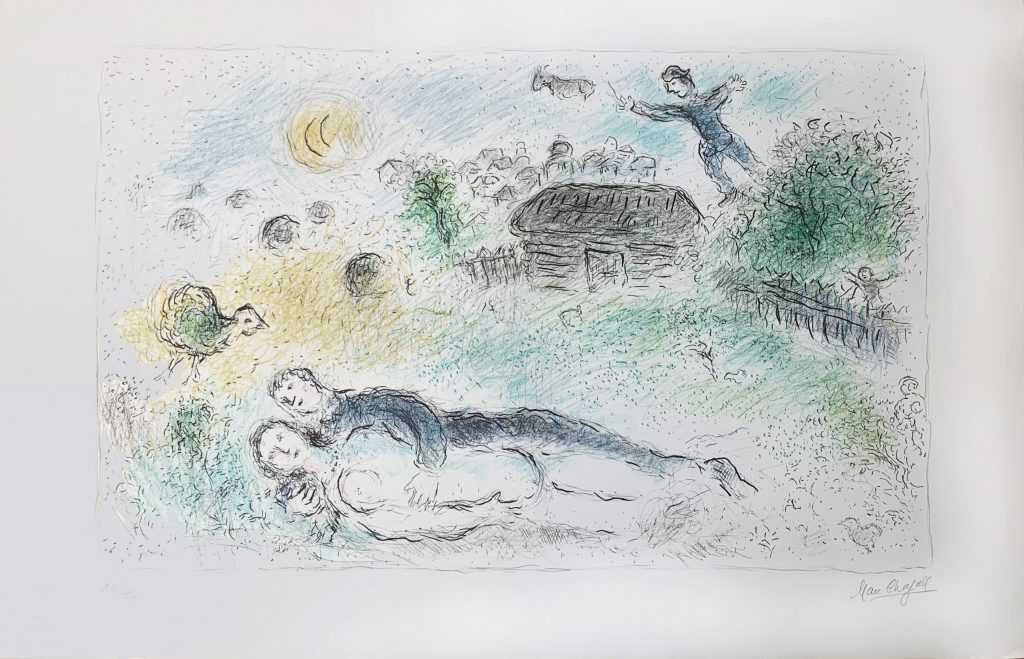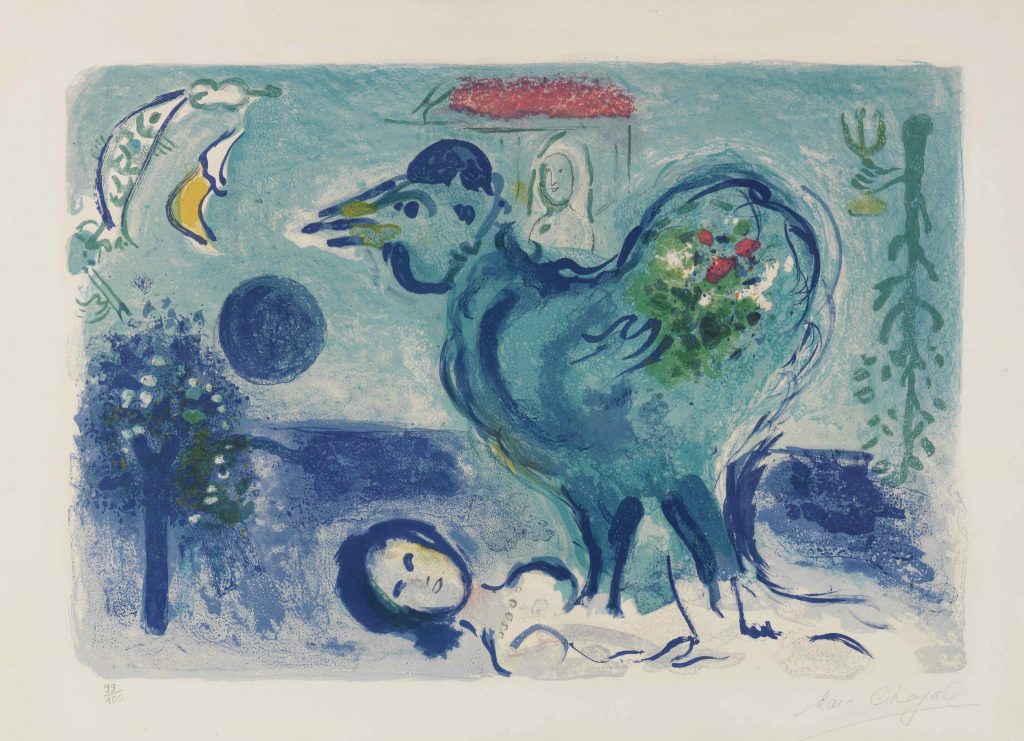The Inspiration Behind Marc Chagall Prints
During Imperial Russia, Jews had fundamentally two options for joining the art world – either “hide or deny one’s Jewish roots”, or “to cherish and publicly express one’s Jewish roots” by integrating them into his art. Chagall chose the latter which form him was also his means of “self-assertion and an expression of principle.”

Chagall’s biographer Franz Meyer explains that with the connections between his art and early life “the hassidic spirit is still the basis and source of nourishment for his art.” Art historian Michael J. Lewis, adds, “As cosmopolitan an artist as he would later become, his storehouse of visual imagery would never expand beyond the landscape of his childhood, with its snowy streets, wooden houses, and ubiquitous fiddlers… [with] scenes of childhood so indelibly in one’s mind and to invest them with an emotional charge so intense that it could only be discharged obliquely through an obsessive repetition of the same cryptic symbols and ideograms… “.]

Years later, at the age of 57 while living in the United States, Chagall confirmed this when he published an open letter entitled, “To My City Vitebsk”:
“Why? Why did I leave you many years ago? … You thought, the boy seeks something, seeks such a special subtlety, that colour descending like stars from the sky and landing, bright and transparent, like snow on our roofs. Where did he get it? How would it come to a boy like him? I don’t know why he couldn’t find it with us, in the city—in his homeland. Maybe the boy is “crazy”, but “crazy” for the sake of art. …You thought: “I can see, I am etched in the boy’s heart, but he is still ‘flying,’ he is still striving to take off, he has ‘wind’ in his head.” … I did not live with you, but I didn’t have one single painting that didn’t breathe with your spirit and reflection.”
Marc Chagall prints
View Marc Chagall prints and lithographs here.
